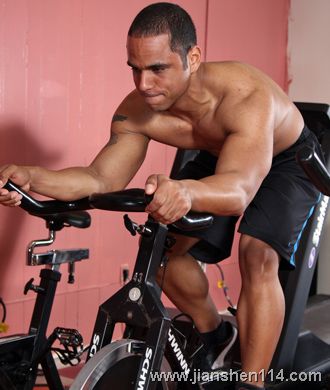
First, the fitness and the concept of fitness
The term "fitness fitness" originated from the United States. Its English name is Physical Fitness. It is a physical fitness health education program organized by the health, sports, and dance organizations of the American sports industry in 1987. Its core content is health-related knowledge and methods, which mainly include knowledge and methods for improving aerobic fitness, muscle strength and endurance, flexibility, and body composition through physical activity, as well as health knowledge of nutrition and physical activity.
The definition of “fitness and fitness†by the World Health Organization is that the body has sufficient energy and physical strength to perform daily affairs without excessive fatigue and has enough energy to enjoy leisure activities and ability to cope with emergencies.
Physical fitness is divided into: fitness fitness, fitness fitness, metabolic fitness
1. Physical fitness, ie, physical fitness, which is closely related to health, is the basis for the body to maintain its own health. It is the body that maintains a pleasant job in daily work and reduces the occurrence of chronic diseases.
premise. The five key factors in measuring healthy physical fitness include: Cardiopulmonary endurance, muscle strength and endurance, body composition, flexibility, and neuromuscular relaxation.
2. Competitive fitness: Competitive fitness, also known as sports fitness, is the fitness of athletes in order to win the best performance in the competition. The skills-related parameters in physical fitness are sensitivity, balance, coordination, explosiveness, reaction time and speed.
3. Metabolic fitness: New physical fitness parameters proposed in recent years, including blood glucose, blood lipids, blood insulin, bone density and so on. Metabolic fitness reflects a functional state that is directly related to the occurrence or development of many chronic diseases and directly related to the effects of exercise. Through exercise, you can reduce blood lipid levels, control blood sugar, increase bone density, increase body metabolism, reduce the occurrence of various kinds of exercise-deficient diseases, and affect the body's overall body fitness level.

Second, the effect of physical fitness activities on children's physiological development:
1. Promote bone and muscle development;
2. Improve cardiopulmonary endurance;
3. Improve coordination and control of balance and movement;
4. Strengthen self-regulation of internal organs;
5. Promote the development of sensory awareness;
6. Promote normal growth and development;
7. Develop correct body postures;
8. Develop basic activities and improve social adaptability;
9. Develop physical fitness;
10. Develop adaptability to the environment and immunity.
At the same time, physical fitness can have a positive impact on children’s psychological and social development. It can promote creativity, stimulate multifaceted thinking, cultivate good feelings and personality, increase confidence, exercise willpower, and recognize the correct values.

Third, children's physical fitness assessment
Evaluate children's physical fitness level, compare pre-training and post-training schedules, identify unusual physiological conditions in children, motivate children's learning motivation, determine whether physical activity scheduling is effective, determine whether physical activity intensity is appropriate, and set up a norm for research. Use, provide information for the future development of society planning.

Fourth, children's physical fitness curriculum activities and planning
1. Scenario game, the basic content is based on the body, with certain plots, roles, planning, entertainment and competition. It can promote physical growth, basic mobility, emotional experience, cognitive ability, social adaptability and good moral character. Games are activities where children enjoy themselves spontaneously, voluntarily, and actively participating. Games are tools for children's organization and life experience, and they are also full of fantasy creation.
2. Ball activities, through the ball activities can strengthen children's ability to comply with the rules, children can discuss, communicate with each other and determine the strategy, learn to deal with the lack of individual companions, learn from each other, make appropriate for different signals such as whistle or hand number, etc. Responsiveness, integration of mastered athletic skills and new learning techniques, enhanced teamwork and collaboration among team members, promotion of creativity, mutual encouragement, continuous improvement, and greater progress and enjoyment of sports.
3, strength training, dynamic muscle activity, not only to accelerate the congestion of the muscle itself, but also to accelerate the congestion of some of the relevant bones, thus promoting bone growth and attention, to promote dynamic muscle activity of young children, while opposing static muscle tension and Lift weights and push weights. Emphasizing the importance of developing coordination and agility in muscle activity.
4, flexibility training, to avoid joint stiffness and muscle shortening, to maintain proper flexibility will make physical activity more sensitive, and can reduce muscle tension caused by fatigue and pain.
5, aerobic training, is conducive to the vascular system, strengthen the respiratory system, reduce cardiovascular disease, cardiovascular fitness is good, long-term physical activity will not occur early fatigue.
6, fitness dance and music rhythm, can concentrate, strengthen learning ability, team spirit, relieve stress.
7. Sports education and modern creative dance can provide comprehensive education on physical, emotional, cognitive and social activities.
8, parent-child game, it is a way for parent-child interaction, has special significance for improving mutual relations and improving family harmony and mutual trust.